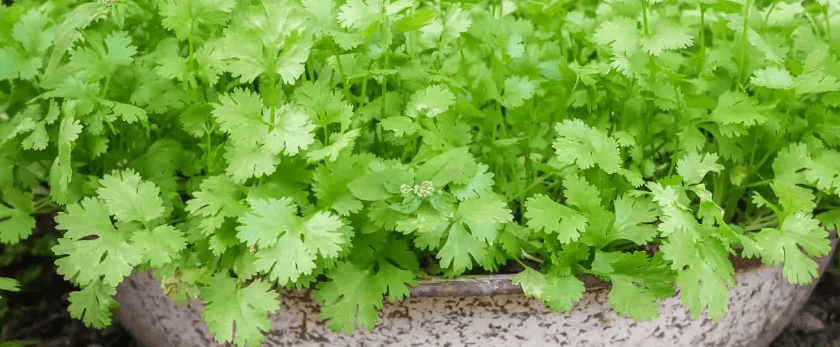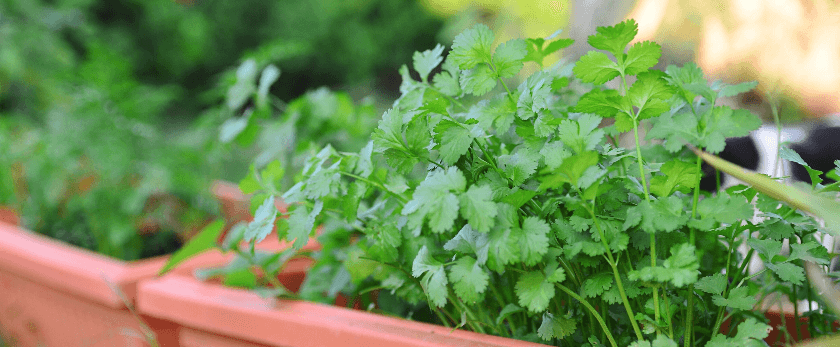Coriander, also known as cilantro, is a versatile and flavorful herb that is commonly used in many cuisines around the world. Not only does it add a delicious touch to dishes, but it also has numerous health benefits. Growing your own coriander at home is not only a great way to have a constant supply of fresh herbs, but it is also an eco-friendly and sustainable choice. In this article, we will discuss how to grow coriander and provide tips for caring for your plants.
What is Coriander?
Coriander is a herb that is part of the parsley family. It is native to regions in southern Europe, northern Africa, and southwestern Asia. The plant produces both leaves, which are known as cilantro, and seeds, which are used as a spice. The leaves have a distinct citrusy and slightly peppery flavor, while the seeds have a warm, nutty taste.
How to Care for Coriander
Watering
Coriander plants require consistent moisture to thrive. It is important to keep the soil evenly moist, but not waterlogged. Water your plants when the top inch of soil feels dry to the touch. Avoid overwatering, as this can lead to root rot and other issues. If you are growing coriander in a pot, make sure it has good drainage to prevent water from pooling at the bottom.
Light
Coriander plants prefer full sun, but they can also tolerate partial shade. If you are growing them indoors, place them near a sunny window or use a grow light to provide adequate light. If you are growing them outdoors, make sure they are in a spot that receives at least 6 hours of sunlight per day.
Soil
Coriander plants prefer well-draining soil that is rich in organic matter. You can use a potting mix specifically designed for herbs or make your own by mixing equal parts of compost, sand, and garden soil. Avoid using heavy or compacted soil, as this can hinder the growth of your plants.
Fertilizer
Coriander plants do not require a lot of fertilizer, but a light application of a balanced fertilizer once a month can help promote healthy growth. You can also use organic fertilizers such as compost or worm castings. Avoid using chemical fertilizers, as they can harm beneficial insects and pollinators.
Pruning
Pruning is an important part of caring for coriander plants. Regularly pruning your plants will help them grow bushier and produce more leaves. You can start pruning your plants once they have reached a height of 6 inches. Use clean and sharp scissors to snip off the top 1-2 inches of the plant, just above a set of leaves. This will encourage new growth and prevent the plant from flowering too soon.
What is the Best Time to Grow Coriander?
Coriander can be grown year-round in mild climates, but it is best to plant them in the spring or fall. If you live in a region with hot summers, it is best to plant coriander in the fall to avoid the heat. If you are growing coriander indoors, you can plant them at any time of the year.

Common Problems with Coriander
While coriander is a relatively easy herb to grow, it can still face some common problems. Here are a few issues you may encounter and how to address them:
- Bolting: Bolting is when the plant produces flowers and seeds prematurely. This can happen if the plant is exposed to high temperatures or if it is not pruned regularly. To prevent bolting, make sure to keep your plants in a cool and shaded area and prune them regularly.
- Pests: Coriander plants can be susceptible to pests such as aphids, whiteflies, and spider mites. To prevent these pests, regularly inspect your plants and remove any affected leaves. You can also use natural pest control methods such as neem oil or insecticidal soap.
- Diseases: Coriander plants can also be affected by diseases such as powdery mildew and root rot. To prevent these diseases, make sure to provide adequate air circulation and avoid overwatering. If you notice any signs of disease, remove the affected parts of the plant and treat it with a natural fungicide.
Conclusion
Growing coriander at home is a rewarding and sustainable choice. By following these tips for caring for your plants, you can have a constant supply of fresh and flavorful herbs right at your fingertips. Remember to use responsible disposal methods for any plant waste and enjoy the delicious taste and health benefits of your homegrown coriander. Happy gardening!










